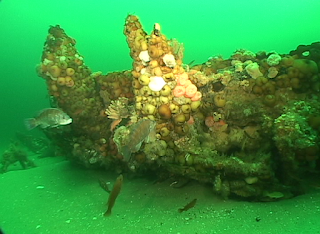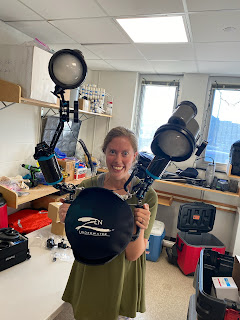Artificial reefs

Friends, I want to tell you about something I'm working on now. Back at the beginning of covid , I used my time while stuck at home to go through old video footage from Stellwagen Bank National Marine Sanctuary. Some of the footage was recorded by sanctuary archaeologists years ago (as far back as 2003), and some of it was recorded by my team in 2019 - 2020 . The videos showed shipwrecks throughout the sanctuary, and as I watched, I kept track of the species living on each one. I wasn't sure how the analysis would shape up, but I knew there were bound to be cool patterns in the data. I finished going through the footage several months ago , but I never dug into the numerical data to look for those patterns - until now. I decided to focus this particular analysis on the archived footage and look at the distributions of species across the sanctuary. After working the data through my normal analysis procedures, I realized there was actually a very interesting story to be told.
